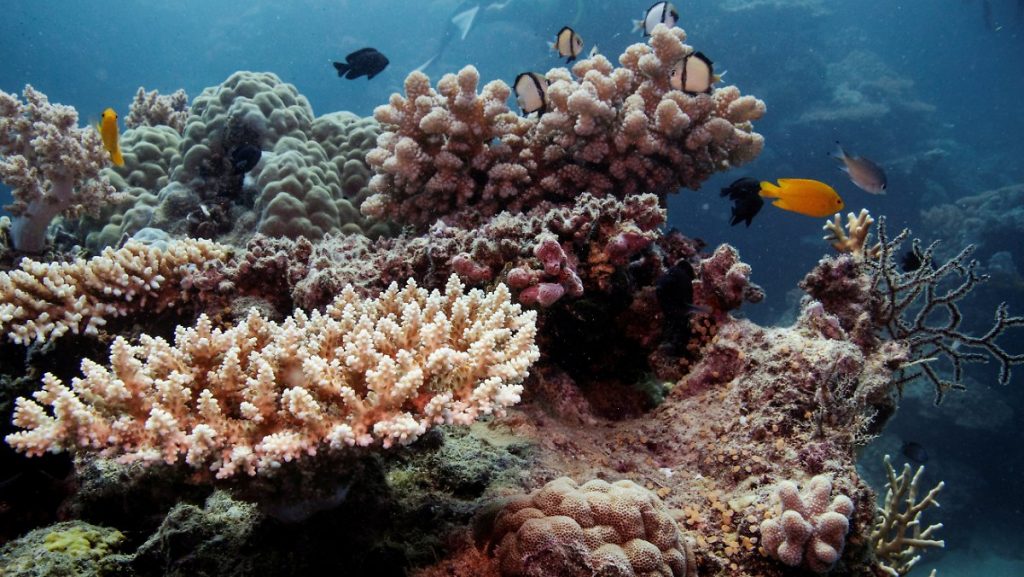Friday 5 November 2021
Heat waves cause color change
Climate change is damaging the Great Barrier Reef
The consequences of climate change are manifested in a dramatic way in the Great Barrier Reef: coral reefs are disappearing due to rising sea water temperatures. A study shows that 98 percent of the world’s natural heritage has already been affected by mass bleaching.
According to a study, 98 percent of Australia’s Great Barrier Reef has been affected by coral bleaching since 1998. According to a study published in Current Biology, only a tiny portion of the world’s largest reef has been untouched.
Since 1998, lead author Terry Hughes of Australia’s James Cook University said five mass bleaching operations have turned the reef into a “chessboard” with areas affected differently. While 2 percent of the underwater ecosystem has been preserved, 80 percent has “bleached badly at least once” since 2016.
Corals are sensitive organisms that can only exist in certain temperature ranges. They enter into symbiosis with some unicellular algae – they also get their color from them. If the water temperature rises, the corals repel the algae and lose their color. If this situation continues for a long time, the corals will completely die.
According to scientists, the main cause is climate change and the associated warming of the oceans. Lead author Hughes warned that the frequency, intensity and extent of climate-related heat waves in the ocean are increasing. In 2016, 2017, and 2020, there were three mass bleaches on the reefs as a result of heat waves.
‘Very bad’ odds
Australian government scientists said in July that corals had shown signs of recovery since the last bleaching. However, they admitted that the long-term prospects for the reef were “very poor”.
According to the latest study, corals that have already been exposed to a heat wave are less susceptible to temperature changes afterwards. However, co-author Sean Connolly of the Smithsonian Tropical Research Institute cautioned that frequent and heavier bleaching of corals would make corals less resilient. “Climate change mitigation measures are vital.”
UNESCO declared the 2,300 km-long coral reef a World Heritage Site in 1981. The area, made up of 2,500 individual corals, is home to unique flora and fauna.

“Reader. Organizer. Infuriatingly humble twitter expert. Certified communicator.”



More Stories
Nvidia GeForce RTX 4090: AIDA64 gets Ada spearhead support
Rogue Trader – Details about the first cRPG in the series – CD-Action
t3n – Digital Pioneers | digital business magazine